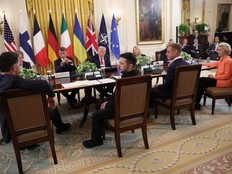What to expect for the Ottawa Charge ahead of PWHL expansion

Article content
Looming over the Ottawa Charge playoff run, even with the opportunity to capture the Walter Cup hanging in the balance, was the knowledge that the team was playing its final hockey together.
The PWHL’s foray into Seattle and Vancouver, just two years after the league’s inception, hung in the minds of Charge players as they battled for a championship.
As close-knit as the team became, Ottawa — just like the five other PWHL franchises — will surrender four players between the two new teams’ exclusive free-agent signing window and the expansion draft. Those two processes will give Seattle and Vancouver 12-player rosters ahead of the annual draft later in the month.
For Ottawa’s part, it will have the limited ability to defend itself by protecting just three players before the signing window, followed by one more protection once they have lost two players between the signing window and the expansion draft.
That means losing more than just depth players, but frontline contributors to the club’s surprising finals run. Meanwhile, the league’s newest members will enter next season with fully stocked cupboards and real championship ambitions.
Ottawa will make its three-player protection list public at noon on Tuesday. From there, Seattle and Vancouver will open their exclusive signing window starting at 9 a.m. on Wednesday until 5 p.m. on June 8, in which they can sign up to five players each.
Free agents are ineligible to be protected by their teams, making them available for contract signings with the league’s West Coast franchises and eventually the rest of the league should they remain unsigned.
The signing window introduces an interesting wrinkle compared to the expansion processes typical of the NHL. That’s because for every player that Seattle and Vancouver sign in their exclusive window, it also means one less player that they can pick up in the expansion draft on June 9.
Meanwhile, any players that the original six franchises lose in the signing window will count towards the four total players they will lose in the expansion process.
WHO WILL OTTAWA PROTECT?
General manager Mike Hirshfeld revealed last week that these decisions were finalized while the club was in Minnesota for the PWHL final.
“We’ve put a lot of work into choosing our three players (and) feel very comfortable (with) who we’re going to protect,” he said during the team’s end-of-season media availability.
While some teams have a relatively simple set of decisions to make regarding their protections, Ottawa seemingly has any number of directions it could go after protecting playoff MVP and goaltender of the year nominee Gwyneth Philips — that’s the only no-brainer.
It’s not as simple as protecting the two most talented players on its roster — as if even that task could be achieved without great debate.
That said, the most likely scenario sees Ottawa protect Philips, Emily Clark and one of Ashton Bell or Ronja Savolainen.
While PWHL clubs have placed a premium on experienced leaders like Brianne Jenner and Emerance Maschmeyer, both of those players carry risk with their sizable contracts and age. It will likely be in the Charge’s best interest to leave them exposed, as new general managers Meghan Turner in Seattle and Cara Gardner Morey in Vancouver have indicated their goal of building around leadership cores through the draft.
In potentially shedding two of their largest contracts and oldest players, whose best production may be behind them, Ottawa could escape the expansion process with salary cap space for their younger talent, provided they go unsigned by Seattle and Vancouver. The first name that comes to mind is top scorer Tereza Vanišová, who scored more goals than all but Marie-Philip Poulin and Hilary Knight this season.
It’s also important to note that Ottawa will be able to protect a fourth player once they lose two, so it will likely aim to expose a player that they believe will be overshadowed by the marquee names of Jenner and Maschmeyer.
Also factoring into the equation is position — Ottawa can essentially choose between protecting two forwards, two defenders, or one of each. Conventional wisdom suggests most teams will spread the love by protecting one forward and one defender to solidify their foundational players at each position.
After leading the team in playoff scoring and acting as the team’s engine through low-scoring overtime marathons, Clark has the inside track on a protection slot, making the odds of another forward being protected slim.
That would likely mean exposing 2024 second-overall pick Danielle Serdachny, who almost certainly will be picked up in the expansion draft and likely unlock some of the offence that the Charge drafted her for. While it could be tempting to use another protection slot on her, Hirshfeld may hope Maschmeyer and Jenner attract enough interest for the fourth slot to be used on Serdachny.
Then again, perhaps Hirshfeld is more inclined to protect two-way centre Gabbie Hughes with that fourth spot. She was pivotal in successfully shutting down the top lines of Montreal and Minnesota, enabling Ottawa to go toe-to-toe with two arguably more talented clubs.
Getting back to that third and final slot, Hirshfeld will most likely use it on one of two defenders: Savolainen or Bell. As much as teams value goal scorers, Minnesota’s trio of Lee Stecklein, Sophie Jacques and Claire Thompson — all No. 1 defenders in their own right — have proven that the biggest edge a team can have is dependable puck-moving defenders who contribute on both ends of the ice.
While Ottawa doesn’t necessarily have a single franchise-calibre defender, fitting that description most accurately might be Savolainen, who has the raw skills to be even better than she was in her rookie PWHL season. Standing at 5-foot-10, the 27-year-old Finn is a larger-than-average player with a hard, physical edge. Pair that with smooth skating and a willingness to jump up into the play and Savolainen is somewhat of a unicorn.
Then there’s Bell, who anchored Ottawa’s top pair alongside Jocelyne Larocque. And while Larocque elevated her game after a tough start to the season in Toronto, the 37-year-old was ultimately the benefactor of Bell’s strong skating and puck-moving ability. Without a mobile partner beside her, Larocque’s hard-nosed game, built for winning battles in front of the net and in the corners, wouldn’t have thrived the way it did.
The cases for protecting one of Savolainen and Bell with one of the initial three slots are both very strong, and they’re prime candidates to fill that fourth spot, too.
WHO WILL OTTAWA LOSE?
Forward Victoria Bach announced her retirement from hockey over the weekend, so that’s one player gone, expansion aside.
Vanisova, Rebecca Leslie, Shiann Darkangelo, Jincy Roese, Zoe Boyd, Alexa Vasko, Taylor House, Sam Isbell and Natalie Snodgrass are all free agents eligible for the signing window with Seattle and Vancouver.
Obviously, the Charge are hoping everything works out with Vanisova. Her absence would subtract a major source of goals from an already goal-starved team.
Otherwise, there are no major game-breakers to be lost through free agency. Losing Darkangelo, who stepped up in a big way offensively this season, is a real possibility. Boyd is also intriguing, as she stepped up in the playoffs in the place of an injured Roese and performed very well in a shutdown role. Ottawa will hope the depth of defensive talent available leaguewide will deter the two new teams from scooping Boyd.
As for the draft, all eyes are on Serdachny, whose projected upside as a high-flying goal scorer is sure to attract interest from Seattle and Vancouver. If Hirshfeld does indeed decide to protect his more established players — including one of Bell, Savolainen or Hughes — Serdachny is almost certain to be lost.
Of course, the next two most likely to find new homes are, in order, Maschmeyer and Jenner. Looking at the likely availability of goalies around the league, Maschmeyer and Minnesota’s Nicole Hensley look to be the two best options for the expansion draft. Ottawa may cross its fingers that Jenner’s decline in production in her second season will make Seattle and Vancouver look the other way, but her getting selected might not be the worst outcome for the Charge, either.
Other players in danger of being picked up are forward Mannon McMahon and defender Aneta Tejralova. It’s difficult to see either being protected with Ottawa’s fourth slot, and both played pivotal roles on the first line and second defence pairing, respectively. Kateřina Mrázová, who placed second in team scoring in the PWHL’s inaugural season, has an injury history that may keep teams away.
At any rate, Ottawa’s expansion calculus will serve as a litmus test for how PWHL franchises balance short-term success with long-term sustainability in a league still attempting to sustain its competitive parity.













Postmedia is committed to maintaining a lively but civil forum for discussion. Please keep comments relevant and respectful. Comments may take up to an hour to appear on the site. You will receive an email if there is a reply to your comment, an update to a thread you follow or if a user you follow comments. Visit our Community Guidelines for more information.